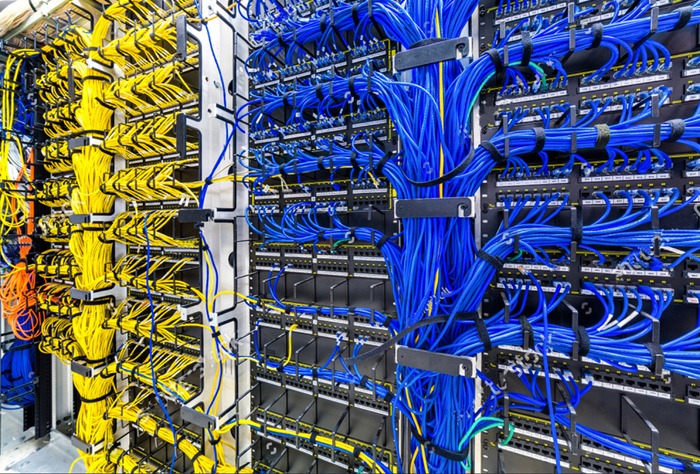Ethernet

In 1973, Robert Metcalfe wrote a memo that would serve as the founding concepts for the technology that we now know as Ethernet. It was not until 1979 that IEEE fully standardized the 802.3 Ethernet standard. The first 802.3 Ethernet standard specified for 10 Mbps using coaxial cabling (known as thicknet) but twisted copper pairs proved more efficient and quickly replaced coaxial cabling.
But Ethernet’s versatility has far outgrown its original use-case. Ethernet is more than twisted pair copper terminated with an RJ45 connector. The Ethernet Alliance defines Ethernet as a wired technology that supports a variety of media/medium including backplanes, twisted pair, twinax, multimode fiber and single-mode fiber. These additional iterations enable Ethernet to provide speeds beyond the traditional 1 Gigabit rates that end-users are traditionally familiar with. Ethernet can deliver terabit speeds to Metropolitan Area Networks (MANs) as well as core networks such as hyperscale datacenters.
Terabit Ethernet (TbE) refers to Ethernet with speeds exceeding 100 Gigabit Ethernet (100 Gbit/s). The 400 Gigabit Ethernet (400G, 400GbE) and 200 Gigabit Ethernet (200G, 200GbE) standards were developed by the Institute of Electrical and Electronics Engineers P802.3bs working group, using a wide range of technologies similar to 100 Gigabit Ethernet, which was approved on 6/12/2017. In 2016, several network equipment vendors have provided proprietary solutions for 200G and 400G Ethernet.

Since the original 802.3 Ethernet standard, IEEE has introduced new Ethernet standards that have steadily increased data transmission rates. However, in recent years, not all new Ethernet standards will guarantee higher transmission rates. Study groups have formed around proposed Ethernet standards that do not necessarily operate faster than existing standards. Ethernet standards are following a non-linear evolution that pursues both faster and slower speeds than existing standards. For example, after having finalized the standardization of 40 gigabit Ethernet(GbE) in 2010, network equipment manufacturers formed a consortium around 25 gigabit Ethernet (GbE) in 2015 to show IEEE their growing interest in a slower standard than the already available 40GbE. Hyperscale data centers with top-of-rack switches have outgrown 10GbE. But at the same time, upgrading to 40GbE represents a hefty investment. 25Gbe would provide a cost-effective alternative that would allow cloud providers to make a cost-effective (and scaleable) upgrade that will help them keep up with the growing demand in cloud computing.
